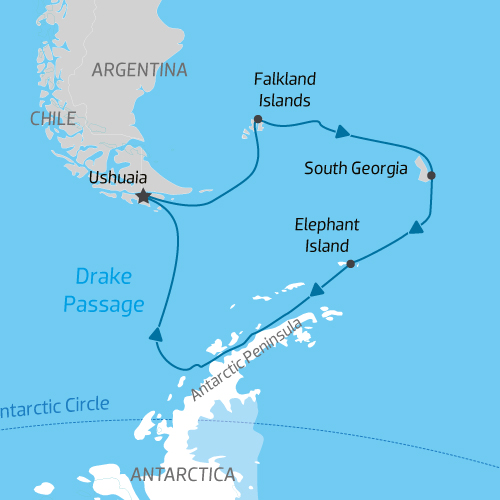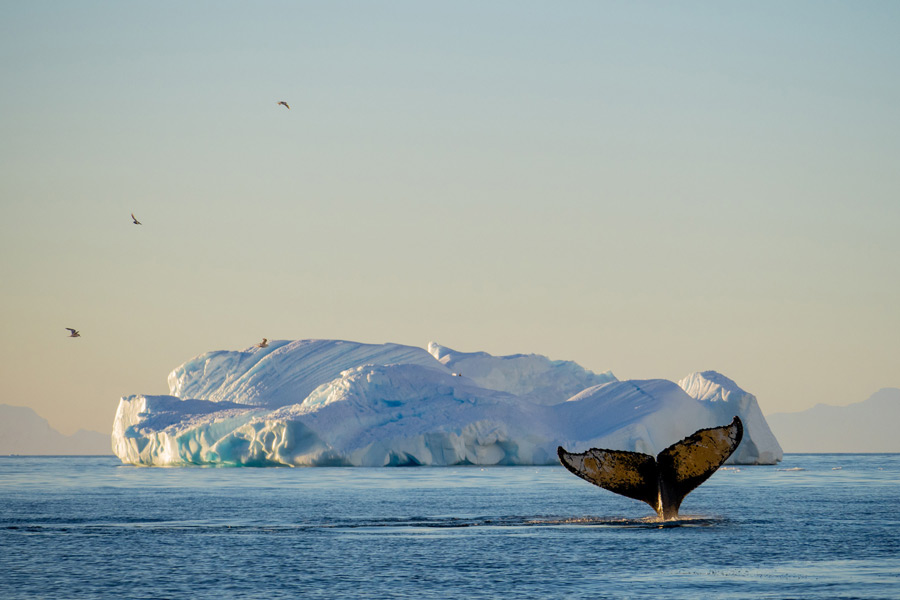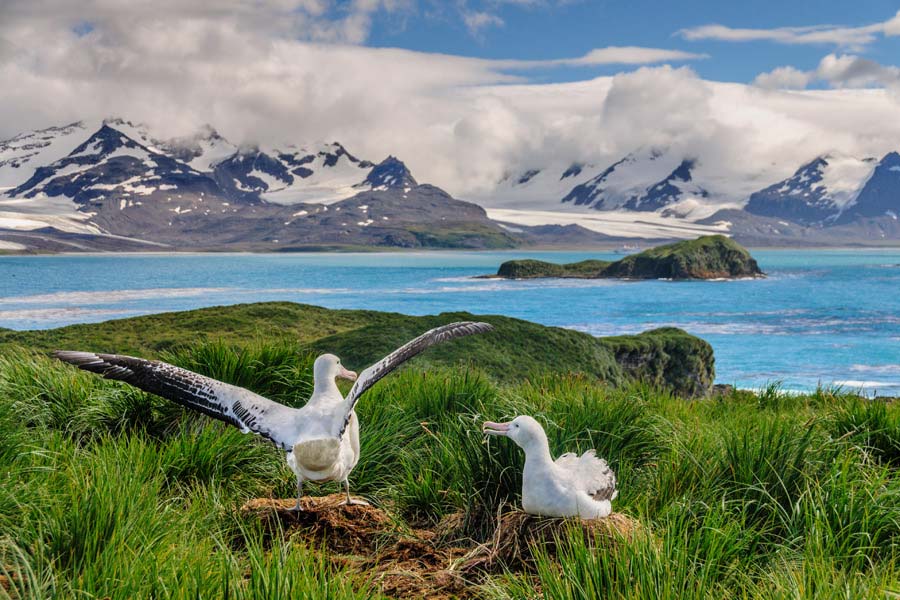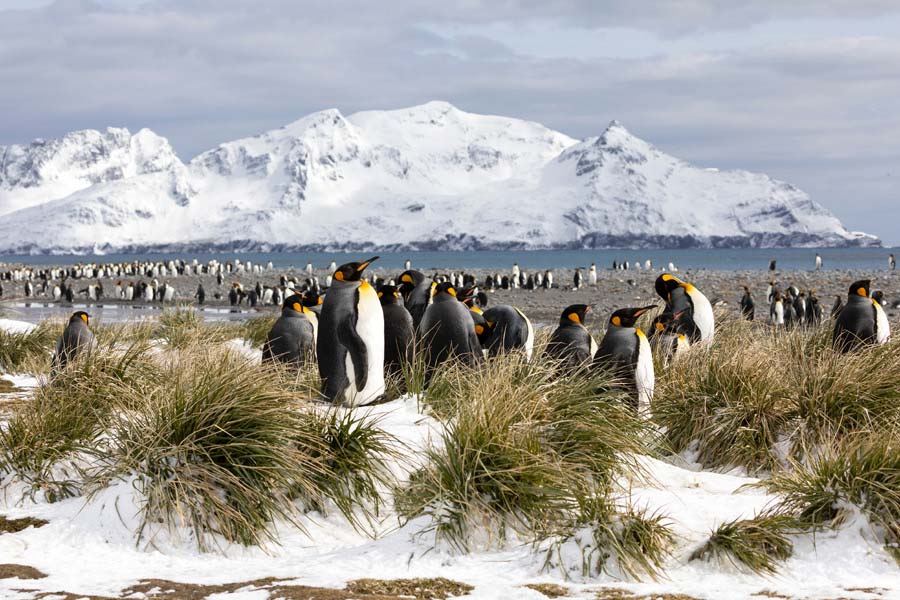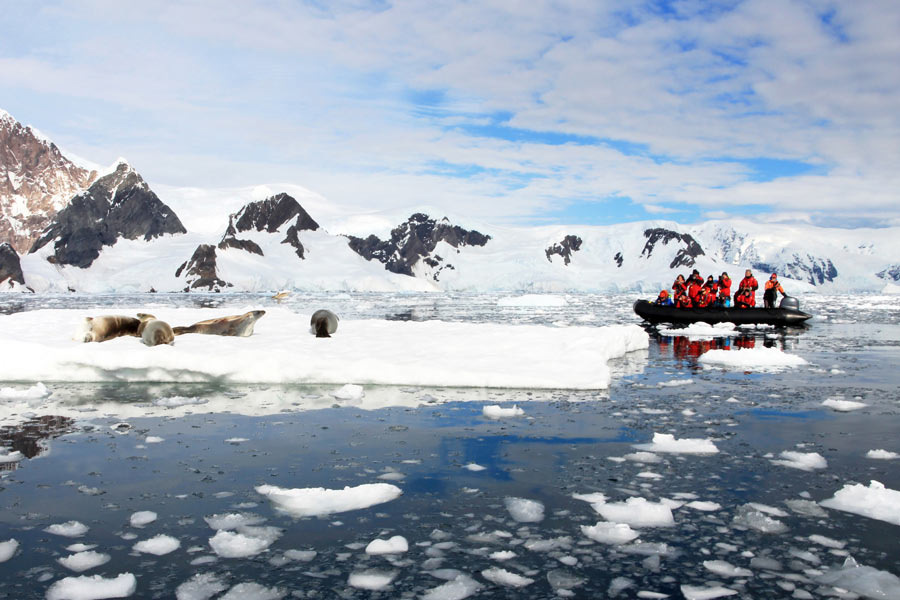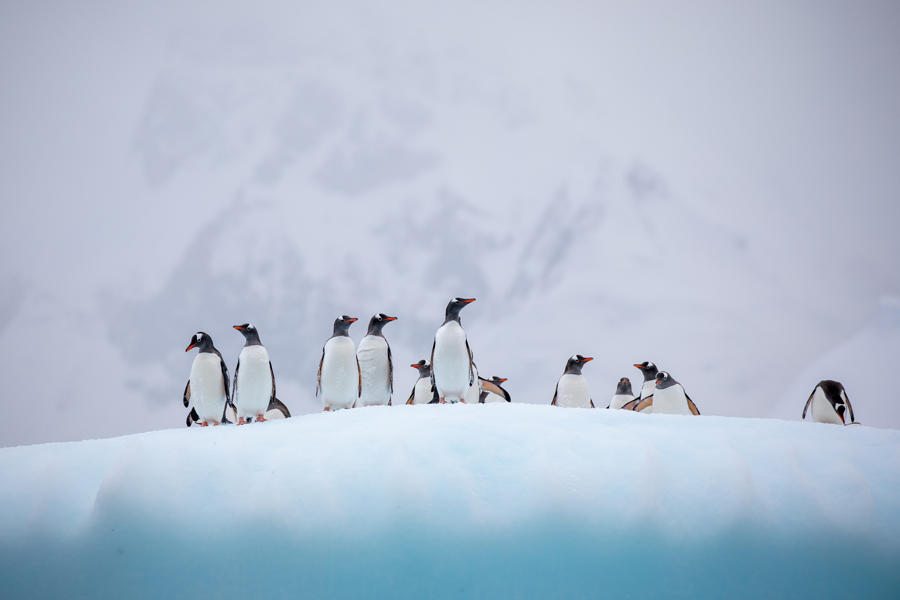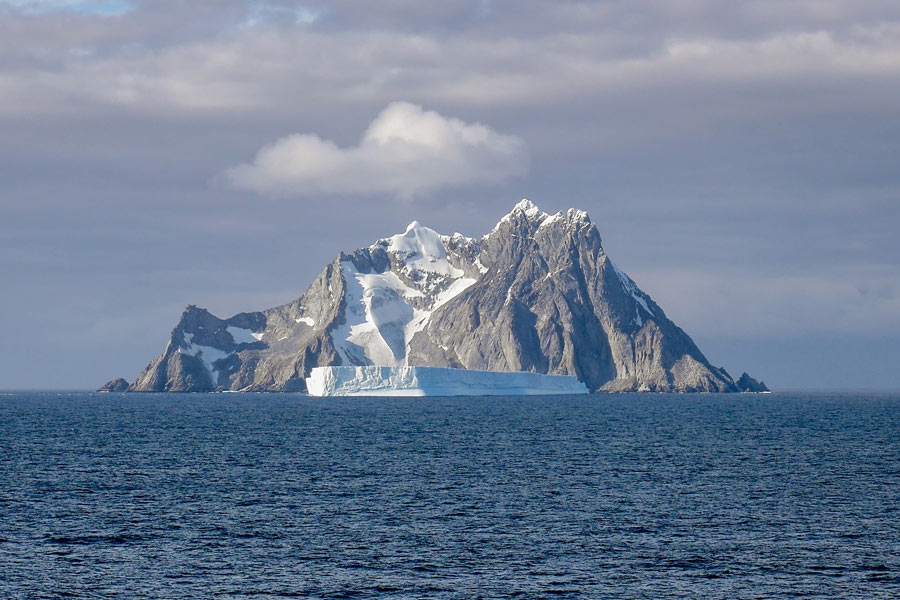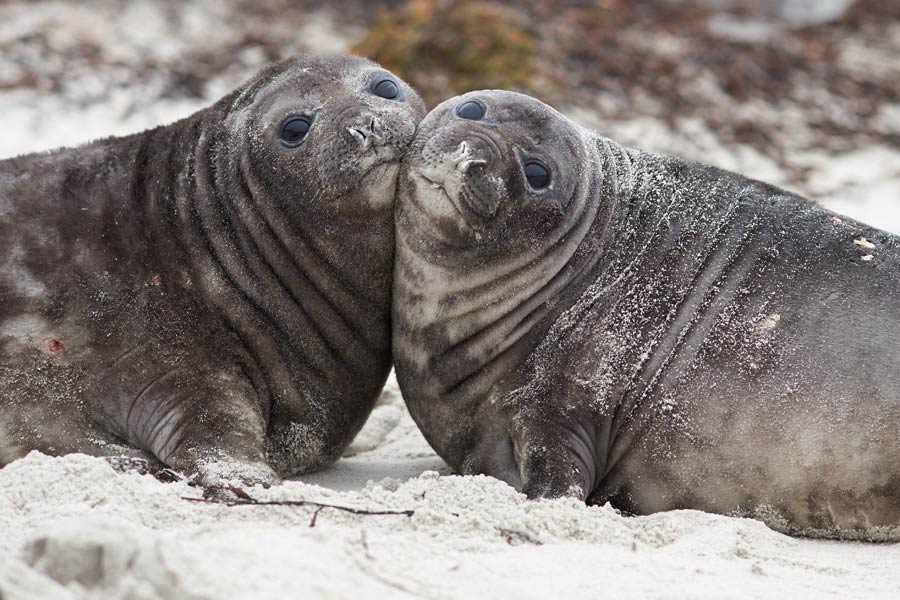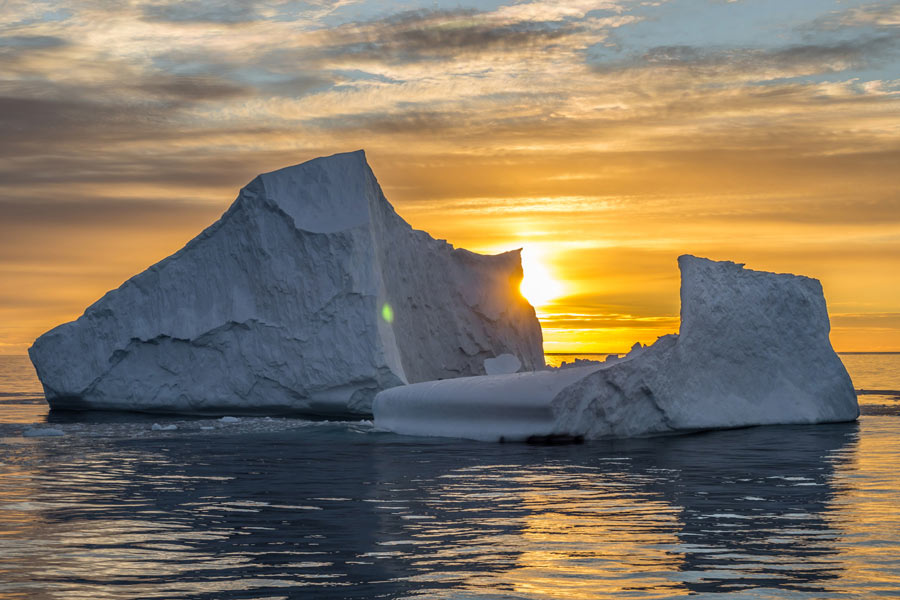Our exact itinerary will depend on local land and sea conditions but the following destinations are among those that we would like to explore:
Salisbury Plain
Sometimes called the “Serengeti of the South”, Salisbury Plain is a wildlife site without parallel. Several large glaciers provide a dramatic backdrop for the tens of thousands of King Penguins that nest in the tussac grass of this remarkable ecosystem. The wide beach makes for excellent walking as we visit the colony, where we are literally surrounded and delightfully outnumbered by throngs of curious, gentle penguins. Elephant seals also abound, as well as Southern Giant Petrels and the occasional wandering Gentoo Penguin. Prepare for an awe-inspiring experience.
Prion Island
Prion Island is a beautiful tussac-grass covered islet. If we are lucky we will get the opportunity to see a breeding colony of Wandering Albatross on top of it. We will climb to the summit on a wooden boardwalk, which takes us close to their nests and offers comfortable viewing platforms.
Grytviken
Grytviken lies within King Edward Cove, a sheltered harbor tucked between Hope Point and Hobart Rock on the western shore of Cumberland East Bay. The rusting ruins of the Grytviken whaling station are situated on a level plain at the head of the cove, backed by steep hills and mountains. Now the site of the South Georgia Museum, the station remains a focal point of interest for many visitors, as does Sir Ernest Shackleton´s grave in the nearby whaler´s cemetery and his memorial cross on Hope Point. The scenery in this area is exceptionally beautiful even by South Georgia standards: the glaciers and snow covered peaks of the Allardyce Range – Mt. Sugartop, Mt. Paget, Mt. Roots, Nordenskjöld Peak, Mt. Kling and Mt. Brooker – form a magnificent backdrop to the cove, and the views from King Edward Point in particular, must be among the finest on earth.
Godthul
Situated 9km east of Cumberland East Bay on the eastern shores of Barff Peninsula, Godthul is a 3km long inlet that lies between Cape George and Long Point. Gentoo Penguins are abundant on the tussac plateau and Light-mantled Sooty Albatrosses echo off the natural cliff amphitheater that encircles the harbor. A floating factory ship serviced by two whale catchers was stationed here each summer between 1908 and 1929. A small shore depot supporting the whaling operations was established close by the stream in the southeast corner of the harbor, and the rusting barrels, wooden shed and boats are fascinating relics of the whaling era, as is the impressive collection of whale and elephant seal bones scattered along the beach.
St Andrews Bay
The surf beaten coastline at St. Andrews Bay runs north-south in a 1.86 mile (3 km) long uninterrupted sweep of fine dark sand, covered in penguins and seals and bounded in the interior by the Cook, Buxton and Heaney Glaciers. The bay hosts the biggest colony of King Penguins on South Georgia. Now in spring time, the beach is also carpeted with elephant seals. Such a large assemblage of wildlife attracts an entourage of persistent and voracious scavengers. Sheathbills dart in and around the penguin colony. Cape Petrels nest in a small number on the cliffs north of St. Andrews Bay. Leopard seals patrol the rocks at this end of the beach too, hunting for penguins along the edge of kelp beds. A few White-chinned Petrels and Light-mantled Sooty Albatrosses nest on the tussac slopes.
